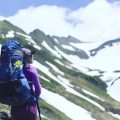1. Understanding the Diversity of Indian Terrains
India is a land blessed with breathtaking high-altitude terrains, offering trekkers a wide spectrum of experiences shaped by its diverse geography. From the snow-clad majesty of the Himalayas in the north to the lush, misty slopes of the Western Ghats in the south-west, each region presents unique challenges and rewards for those organising and managing trekking events. The mighty Himalayas, stretching across states like Himachal Pradesh, Uttarakhand, Jammu & Kashmir, and Sikkim, are renowned for their towering peaks, dramatic weather shifts, and rugged trails. Here, treks such as Chadar or Roopkund demand meticulous planning due to altitude sickness risks and unpredictable climatic conditions. In contrast, the Western Ghats—spanning Maharashtra, Karnataka, Kerala, and Tamil Nadu—offer verdant forests, monsoon-fed rivers, and ancient hill forts. Although not as high as the Himalayas, treks like Kudremukh or Rajmachi come with their own set of logistical challenges: leech-infested paths during rains, dense fogs obscuring visibility, and slippery rocky trails. Understanding these regional nuances is crucial for trek organisers. It enables them to tailor safety protocols, logistics, and cultural interactions to suit the terrain. Moreover, local customs—from Himalayan Buddhist villages to tribal settlements in the Nilgiris—significantly shape group dynamics and trekking etiquette. Recognising how India’s varied landscapes influence trekking not only enhances participant safety but also ensures an authentic adventure rooted in respect for both nature and local traditions.
2. Pre-event Planning: Logistics and Permissions
When it comes to organising and managing tough high-altitude trekking events in India, meticulous pre-event planning is non-negotiable. The logistical landscape is complex, given the remoteness of locations like Ladakh, Himachal Pradesh, Sikkim, and Uttarakhand. One must account for unpredictable weather, limited connectivity, and the need to ensure trekkers’ safety at every step.
The first crucial step is designing a travel plan that factors in acclimatisation days, suitable transport modes (jeep, tempo traveller, local buses), and buffer times for delays. Selecting trustworthy local vendors for porters, mules, food supplies, and medical backup is equally vital. Coordination with these service providers often needs a blend of Hindi and regional dialects, as well as an understanding of local customs.
Obtaining permissions is another cornerstone. Many high-altitude treks in India require government or army-issued permits, such as the Inner Line Permit (ILP) for areas bordering Tibet or China. Each state has its own regulations and issuing offices; hence early application is recommended. Below is a summary table of common permits:
| Region | Permit Required | Issuing Authority |
|---|---|---|
| Ladakh | Inner Line Permit (ILP) | Leh DC Office/Online Portal |
| Sikkim | Restricted Area Permit (RAP) | Sikkim Tourism Office |
| Arunachal Pradesh | Protected Area Permit (PAP) | Arunachal Govt./ Online Portal |
The process involves providing detailed trek itineraries, participant lists with ID proofs (Aadhaar card/passport), and sometimes even proof of insurance. It’s wise to keep multiple photocopies of all documents since officials may request them at various checkpoints.
Liaising with local authorities—such as police stations, forest departments, and gram panchayats—not only ensures compliance but also builds goodwill within the community. Keeping them informed about your event schedule and emergency protocols helps streamline rescue operations if needed.
In essence, successful pre-event planning in Indian high-altitude treks hinges on proactive logistics management, timely acquisition of permissions, and fostering strong relationships with regional stakeholders for safe and smooth operations.

3. Local Teams and Cultural Sensitivities
One of the most important aspects of organising and managing tough high-altitude trekking events in India is building strong, reliable local teams. The success of any expedition in the Indian Himalayas or other challenging terrains depends largely on collaboration with experienced local guides, porters, and support staff. These individuals bring not only their skills and knowledge of the landscape but also deep-rooted understanding of regional weather patterns, traditional navigation routes, and safety protocols that are unique to each area.
When forming these teams, it is essential to respect and integrate the diverse cultures, languages, and customs that define India’s mountainous regions. For example, trekkers venturing into Ladakh must be aware of Buddhist traditions and etiquette, while those in Uttarakhand or Himachal Pradesh might encounter distinct Pahari cultures. Engaging with local communities using respectful language—whether Hindi, Ladakhi, Garhwali, or others—not only helps in smooth communication but also builds trust and rapport.
Understanding regional practices extends beyond verbal communication. In many remote villages, there are specific rituals or taboos around food, dress code, or even interaction between men and women. Event organisers should brief participants about these nuances beforehand to avoid misunderstandings. Respecting meal timings during Ramzan in Muslim-majority areas or being mindful of sacred spaces in tribal belts can go a long way in fostering goodwill.
Moreover, fair treatment of local staff is paramount. This means ensuring transparent wages according to industry standards (often discussed openly among porters), providing proper gear for extreme weather, and acknowledging their contributions publicly. Many successful trek organisers make it a point to celebrate milestones together—sharing sweets at summits or inviting guides to closing ceremonies—which creates a sense of unity and mutual respect.
Incorporating traditional wisdom from local guides can also enhance the trekking experience. For instance, they may suggest acclimatisation strategies based on generations-old practices or recommend safe drinking water sources not marked on modern maps. Listening to their advice demonstrates humility and often results in safer journeys.
Ultimately, building reliable teams with local expertise—while honouring the unique cultural tapestry of each region—ensures not only smooth logistics but also positive interactions throughout the event. This approach strengthens community ties and leaves a lasting impression of responsible adventure tourism in Indias high-altitude environments.
4. Safety Protocols and Medical Preparedness
Ensuring the safety of trekkers in high-altitude Indian terrains is paramount, given the unpredictable weather, diverse topography, and remote locations that are common here. Organisers must implement robust safety measures tailored to the unique challenges presented by the Himalayas, Western Ghats, or any other trekking region in India.
Comprehensive Safety Measures
Strict protocols start with pre-trek briefings that emphasise route-specific risks, emergency contacts, and group management strategies. Each participant should be provided with a checklist of essential gear, including weather-appropriate clothing, sturdy footwear, and personal identification. Trained trek leaders and local guides who understand regional challenges play a critical role in monitoring group health and morale.
Acclimatisation Routines
Altitude sickness is a significant concern for treks above 2,500 metres, especially for those not accustomed to thinner air. Organisers schedule gradual ascent profiles and rest days for acclimatisation, often following a ‘climb high, sleep low’ approach. Participants are educated on recognising symptoms like headaches, nausea, and dizziness so they can seek timely help.
Sample Acclimatisation Schedule
| Day | Altitude (metres) | Activity |
|---|---|---|
| 1 | 2,000 | Arrival & rest; short walks; hydration focus |
| 2 | 2,500 | Trek to higher camp; light activity; monitor health |
| 3 | 3,000 | Climb high walk; descend to sleep at lower camp |
| 4 | 3,500+ | Gradual ascent if all are well-acclimatised |
Access to Medical Aid in Remote Areas
The remoteness of many Indian trekking trails means medical facilities are often hours away. Therefore, every group should carry a comprehensive first-aid kit stocked with altitude sickness medication (such as Diamox), painkillers, antiseptics, bandages, and basic life-saving equipment. Trek leaders undergo certified wilderness first responder (WFR) or basic life support (BLS) training to handle emergencies on-site until evacuation is possible.
Emergency Response Plan Essentials:
- SOS Communication: Satellite phones or radio sets where mobile networks are unreliable.
- Local Evacuation Contacts: Ties with local porters, mule services, and helicopter rescue teams where available.
- Dossier on Nearest Hospitals: List of hospitals/PHCs (Primary Health Centres) en route with distance/time estimates.
- Cultural Sensitivity: Considering dietary restrictions (vegetarian/vegan) for medication and food supplies.
A strong culture of teamwork and vigilance ensures trekkers’ safety across India’s challenging high-altitude environments. Proper planning not only mitigates risk but also fosters trust among participants—key for successful expeditions in Indian conditions.
5. Sustainable and Responsible Trekking
Strategies to Minimize Environmental Impact
Organising tough high-altitude treks in India’s Himalayas, Western Ghats, or North-East regions demands an unwavering commitment to sustainability. The pristine landscapes of Ladakh, Uttarakhand, Sikkim, and Himachal Pradesh are fragile ecosystems where even minor negligence can cause lasting damage. Event organisers must develop eco-conscious strategies such as encouraging trekkers to carry reusable water bottles, limiting single-use plastics, and ensuring all waste is carried back down the trail. Route selection should be planned to avoid ecologically sensitive zones, while group sizes must be restricted to minimise soil erosion and reduce human footprint. Working closely with local authorities and forest departments ensures compliance with environmental regulations and helps preserve the natural beauty for future generations.
Promoting Cleanliness: Swachh Bharat Initiatives
India’s Swachh Bharat Abhiyan has set a benchmark for cleanliness nationwide, and its spirit is particularly relevant in remote trekking destinations. Trek leaders play a pivotal role by setting examples—organising pre-trek briefings about “Leave No Trace” principles, installing temporary waste collection points at campsites, and conducting post-trek clean-up drives. Many organisers now encourage trekkers to participate in “eco marches,” where every participant collects litter along the trail, making it cleaner than they found it. These practices not only protect local flora and fauna but also foster a sense of shared responsibility among adventurers. Using biodegradable soaps, segregating waste on-site, and collaborating with local panchayats for proper disposal are effective steps that align treks with the Swachh Bharat movement.
Engaging Trekkers in Responsible Tourism
Sustainable trekking is not only about protecting nature—it’s about empowering communities too. Responsible tourism means educating trekkers on respecting local customs, supporting homestays run by village families, and sourcing supplies from local markets. Organisers can host interactive sessions where villagers share their knowledge of medicinal plants or traditional survival skills, forging deeper connections between visitors and hosts. By hiring local guides and porters, organisers create employment opportunities and ensure that economic benefits stay within the region. Engaging trekkers in tree plantation drives or volunteering for village projects during their expeditions builds a culture of giving back—transforming each trek into a journey of social impact as well as personal adventure.
6. Managing Unforeseen Challenges
When you are deep in the Himalayas or the Western Ghats, one thing you quickly learn is that nature rarely follows your plans. Unpredictable weather, sudden landslides, and surprise situations are part and parcel of high-altitude trekking events in India. For organisers, managing these unforeseen challenges requires a unique blend of flexibility, resourcefulness, and local wisdom.
Weather Surprises: The Indian Way
Monsoon clouds can roll in even when the forecast assures clear skies. I remember once while organising a trek near Roopkund, we woke up to bright sunshine but by noon, snow started falling unexpectedly. Our local guides—who have trekked these hills for generations—immediately suggested shifting the camp to a safer spot. Their knowledge of micro-climates and “mountain sense” proved invaluable. Always trust your local support team; they often notice subtle changes long before outsiders do.
Landslides & Trail Blockages
Landslides are not uncommon on routes like Kedarkantha or Hampta Pass, especially after heavy rain. In such moments, communication is key. We always ensure our trekkers are briefed about possible detours and maintain radio contact with support teams at lower camps. Once, a section of trail was swept away overnight near Kuari Pass, forcing us to take an old shepherd’s path. It added hours to our journey but kept everyone safe and gave participants a true taste of adventure and resilience.
Adapting on the Go
In India, “jugaad”—the art of quick fixes—is more than just a word; it’s a survival skill. When faced with sudden cold snaps, we’ve improvised extra insulation from available materials or sourced hot food from nearby villages. When altitude sickness struck unexpectedly among trekkers, we coordinated rapid descents with help from mule owners who know hidden shortcuts down the mountainside. These real-life experiences underline that every Indian trek organiser must be ready for anything—and trust both their team and the wisdom of local communities.
No matter how well you plan, high-altitude treks in India will test your ability to adapt and respond. By embracing unpredictability and learning from each challenge, you not only safeguard your group but also create memorable stories that define the spirit of trekking in Incredible India.

